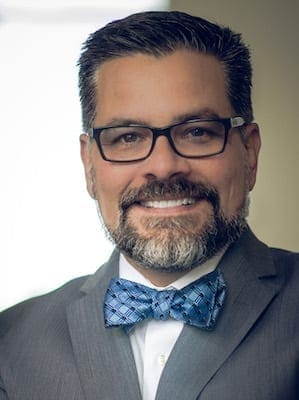The first day of school is either here or fast-approaching for millions of children, teachers and educators across the United States.
Eager and bright minds will walk through the school doors ready for a new school year to begin.
When some students walk through the door, they will take their first steps toward an endless potential of possibilities.
Their schools have been cleaned and polished, new textbooks and computers await them, and their long-tenured teachers will comment on how much they look like their older siblings.
Other students will walk into an entirely different setting. Students and teachers will be forced to learn in hot classrooms because the air conditioning has not been looked at since last spring. Their textbooks will have broken spines and the inscriptions of graduates from 1992.
Some of the teachers who greet them at the door are kind enough, but they are scared to death because they just received their emergency certificate last week due to the dwindling teacher pool.
Realistically, as students return to class after the summer break, they will be walking into two different public school systems.
There is the public school system for the privileged, another for the poor and powerless.
The United States officially ended public school segregation in 1954 when the U.S. Supreme Court ruled it unconstitutional in Brown v. Board of Education. However, a new segregation has emerged.
The new educational segregation separates the privileged from the underprivileged, with the underlying consequences returning the U.S. to a pre-1954 era.
While not explicitly based on race, the new segregation primarily concentrates on socioeconomic lines. However, these new lines are congruent with the old.
While proponents of this new segregation among students attempt to define it as socio-morality, the undergirding lines are more suggestive of socioeconomic, racial profiling and religious isolationism.
Proponents of this new segregation often cite the secularization of public education, the decline of traditional moral standards, the increase of criminal activity, and the generous support of vouchers for private religious schools.
Political supporters of the new segregation have advanced an aggressive strategy to deconstruct and defund public education.
In smaller and poorer states, politicians have villainized public education with the goal of defunding it over that same period.
Each year has brought another round of significant cuts to public education, forcing schools to enact extreme cost-saving measures and cut staff.
This has led to unsafe learning environments, overworked and underpaid educators, teacher shortages and marginalized students comprehending that their value weighs far less compared to their wealthier counterparts.
The new segregation is just as evil as the former. People of faith and goodwill must begin to demand that our communities invest vast resources into the next generation.
That means, of course, each and every child should receive the education they deserve. Their ZIP codes, state flags or the low paychecks of their parents should not be a hindrance to their futures.
People of faith and goodwill should begin to advance the following:
- Vote for politicians, regardless of party, who support fully funding public education.
- Demand that public school teachers receive the respect they deserve and that they are provided a professional compensation for shaping the next generation of leaders and workforce.
- Combat the false narrative of failing public schools through volunteerism and advocating for public education. Public schools are not failing; we have failed them.
- Invest your resources, both money and time (if you have to choose one, choose time), into the lives of students and teachers.
- Become a mentor at a local school, especially schools that most need volunteers as students’ parents are often working two jobs to pay the bills.
- Expose the truth behind school voucher and savings account plans, as they are only seeking to move money away from public education to invest it into a system with very little accountability and the reality of not meeting self-proclaimed expectations. This is the privatization of public schools by the corporate elite; profits over pupils.
- Believe and practice the biblical principle of welcoming and being present for all children.
Christians should be the first people to advocate for the education of all children, regardless of their status.
When Jesus chastised the disciples when they prevented the children access to him, we must remember that lesson was about a teacher and student.
Jesus was a rabbi, a teacher, who understood the pain of being left out of lessons.
As a child of questionable birth in the rural north of Palestine, Jesus was not allowed to study with rabbis or students. Jesus understood the pain of being left behind and neglected when it came to education.
His theology and worldview would not exclude any child, especially the children from lower and neglected classes of people. Jesus was their champion, offering us an example to follow.
Jesus did not believe or practice any sort of segregation, neither old nor new. Jesus was an inclusive rabbi who cared for every child regardless of race or economic standard.
For Jesus, education was a right instilled by God when creating humanity and giving them the responsibility of worldly caretakers.
As caretakers, every child of God should be given the education bestowed upon by their creator. Humanity’s survival counts on it, as together we walk through future doors.
As the doors of our public schools open over the next few weeks, let’s recall G.K. Chesterton’s observation, “Education is simply the soul of our society as it passes from one generation to another.”
If we fail to educate the next generation, then we subject the country to the potential threat of tyrants and tyranny.
If freedom has any chance to ring in the future, then we must raise both our expectations and efforts in investing in public education.
As the school bell rings the new school year into session, may all the students, teachers and educators feel the support of their fellow citizens, find solace as they are lifted up in prayer, and discover the pure joy and excitement of learning.
Across the U.S., the school doors are opening, and I hope that every child walks through them feeling the acceptance, love and affirmation they deserve.
May every child be blind to the segregation they endure, so that the people of faith and goodwill can confront, combat and conquer the new segregation that has emerged.
No child should ever be subject to that type of segregation, especially from a country touting freedom and endless possibilities. If the American Dream is not attainable for all, then it is not attainable for any.





